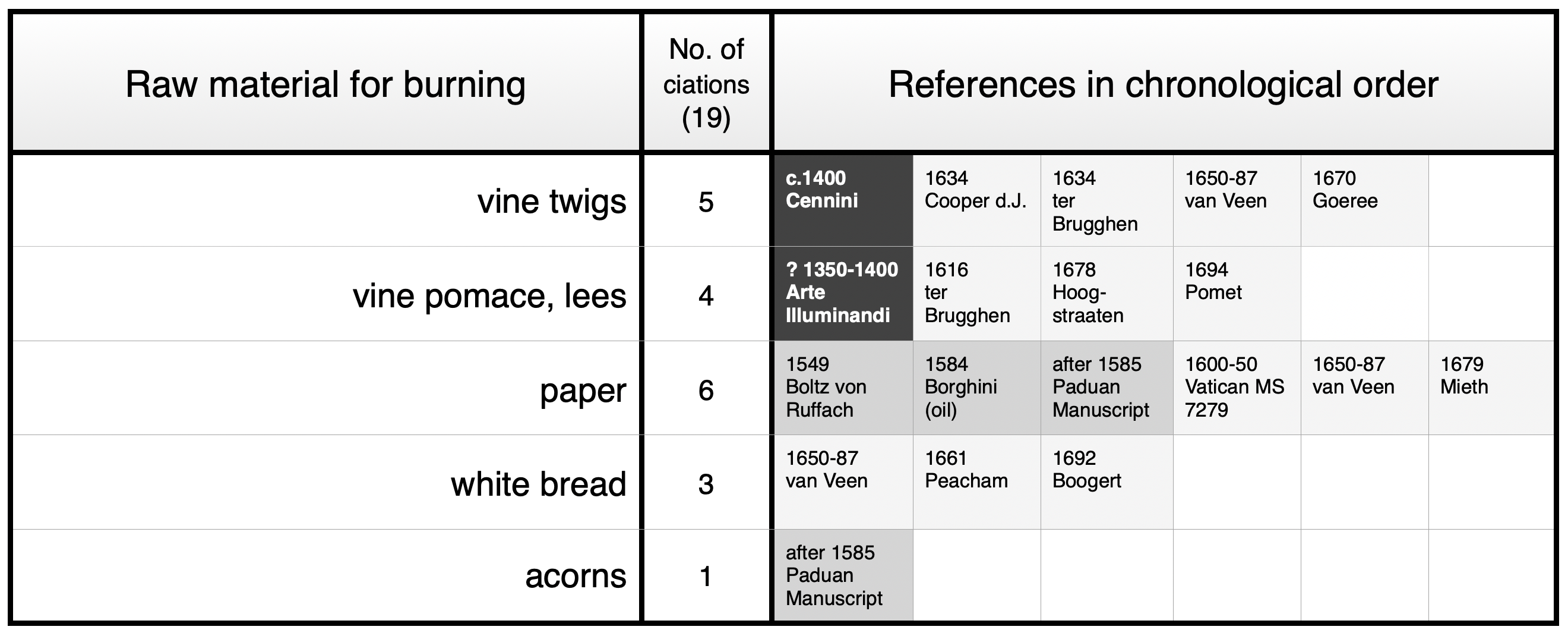

Some recipes prescribe to burn a material. However, in order to avoid complete combustion with great loss of material, it is necessary to stop the process precisely at the point when maximum carbonization is reached. Therefore, recipes advise to directly immerse the burnt material in water. In this wet state the material can be directly ground on a stone or left to dry for later processing. Different burnt substances are described in the sources: (1) vine twigs, (2) vine lees, vine pomace, cream of tartar (3) paper, and (4) bread.